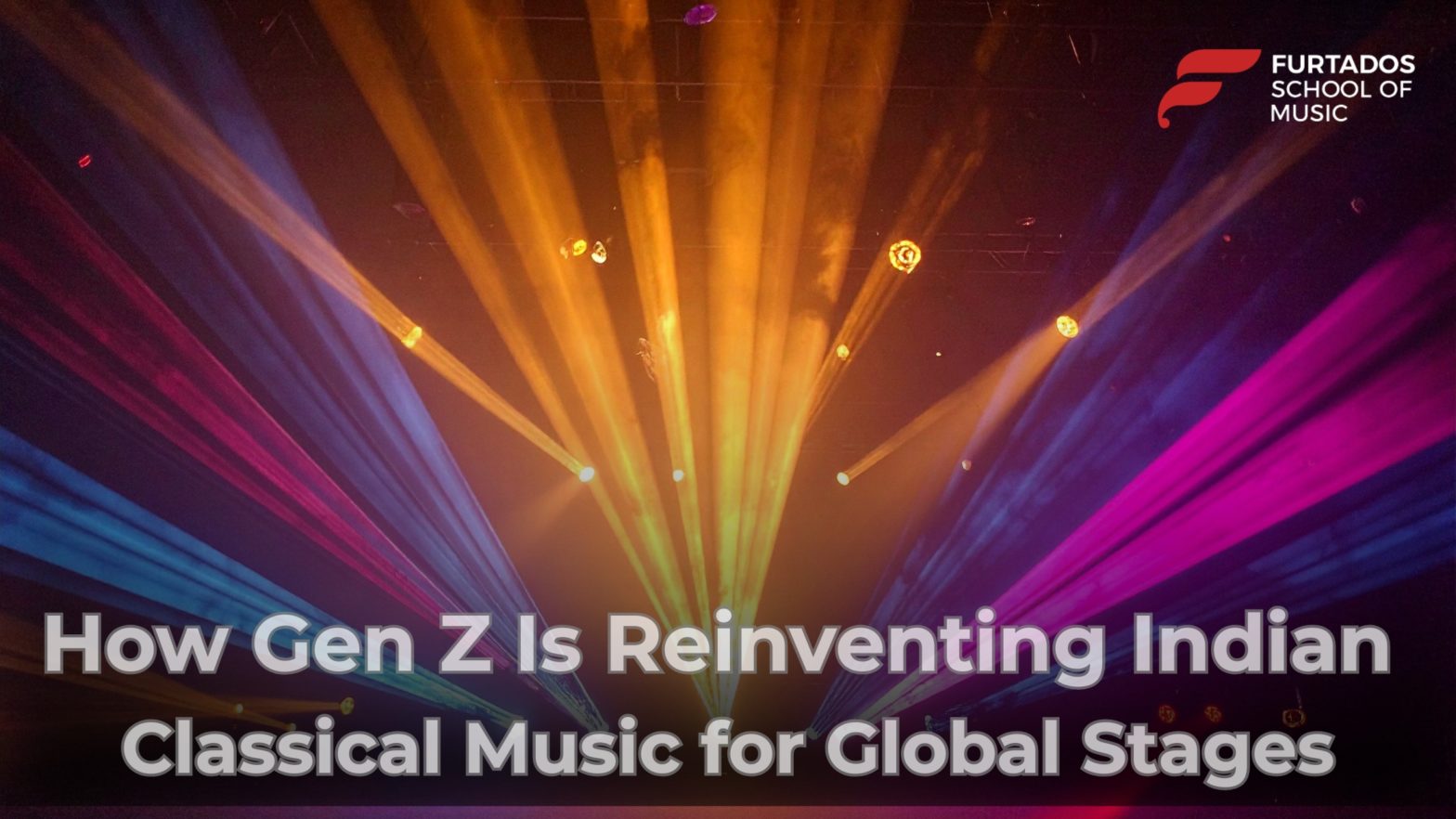Indian classical music has always been a revered art form, rooted in centuries of tradition, discipline, and devotion. But today, a new wave of artists—young, curious, and globally connected—is reshaping its future. Meet Gen Z musicians in India: a generation that’s blending tradition with tech, heritage with hype, and ragas with reels, all while pushing the boundaries of Indian Classical Music for Global Stages.
From Spotify playlists to international music festivals, modern Indian classical music is finding its way into the ears and hearts of global audiences like never before. And at the center of this movement is Gen Z — rewriting the rules without losing the roots.
Gen Z and the Global Soundscape
What makes Gen Z musicians in India stand out? Unlike previous generations who largely followed linear paths of training and performance, today’s artists are exploring classical music through a multimedia, cross-cultural lens. They’re tech-savvy, genre-fluid, and incredibly bold in their expression.
Many of them are:
- Mixing Indian ragas with jazz, electronic, lo-fi, or hip-hop
- Creating viral content on Instagram, YouTube, and TikTok
- Studying at top music schools globally while staying grounded in Indian traditions
- Collaborating with global artists, orchestras, and producers
They don’t just perform; they innovate.
Notable Young Artists Redefining the Genre
Here are a few shining examples of how modern Indian classical music is being redefined by young talent:
Mahesh Raghvan
A Carnatic musician known for fusing classical Indian melodies with electronic music using the iPad-based app GeoShred. His “Tech Carnatic” style has gone viral globally, especially on platforms like Instagram and YouTube.
Ambi Subramaniam
The son of violin legend Dr. L. Subramaniam, Ambi is making waves by combining Indian classical music fusion with Western genres. Along with his sister Bindu, he co-founded the SaPa (Subramaniam Academy of Performing Arts), aiming to modernize Indian music education.
Ricky Kej
While not Gen Z himself, Grammy-winner Ricky Kej is collaborating with younger Indian classical musicians to create global classical fusion projects that have been performed at the UN and across international festivals.
Pravin Godkhindi
A leading bansuri player known for his genre-bending collaborations with jazz and EDM artists, often bringing younger musicians into the fold and creating content tailored for digital audiences.
The Fusion Wave: Beyond Borders
The rise of Indian classical music fusion is not just an experiment — it’s a revolution. Gen Z is merging ragas with genres like:
- Trap and lo-fi beats
- Western classical and orchestral arrangements
- Indie and ambient music styles
Streaming platforms like Spotify, Apple Music, and YouTube Music now feature curated playlists with titles like “Indian Classical Reinvented” or “Fusion Lounge”, which spotlight these young innovators. These platforms are allowing them to reach global audiences without needing traditional record deals.
This exposure is drawing interest from international collaborators and opening up career opportunities that didn’t exist a decade ago.
New Career Possibilities for Young Aspirants
For music students and aspirants, this shift is game-changing. Indian classical music is no longer confined to sabhas and academic stages—it’s now part of global conversations. And with access to production tools, social media, and global audiences, students can:
- Become digital content creators with a classical edge
- Build personal brands through performance and teaching
- Participate in virtual concerts and international collabs
- Pitch to music sync libraries for films and ads
Modern music academies are also catching on, offering courses that combine traditional music with audio tech, marketing, and global music theory.
Social Media: The New Stage
Social platforms are central to this transformation. Instagram reels of tanpura-backed loops, Carnatic vocals over lo-fi beats on TikTok, and YouTube collabs with Western musicians have become new-age performance spaces.
This isn’t about diluting tradition—it’s about making it accessible and engaging for younger audiences.
By showcasing their creativity online, Gen Z musicians are gaining followers, recognition, and — most importantly — industry credibility.
Conclusion: A Tradition Thriving Through Innovation
Indian classical music is not fading; it’s evolving. Thanks to the bold, curious spirit of Gen Z musicians in India, we’re witnessing a cultural renaissance that is making traditional music cool, relevant, and global.
If you’re a student or parent wondering whether classical music still has a future, the answer is clear: Yes — and it’s brighter than ever. With the rise of modern Indian classical music, young artists are not just preserving heritage — they’re redefining it for the world stage.
